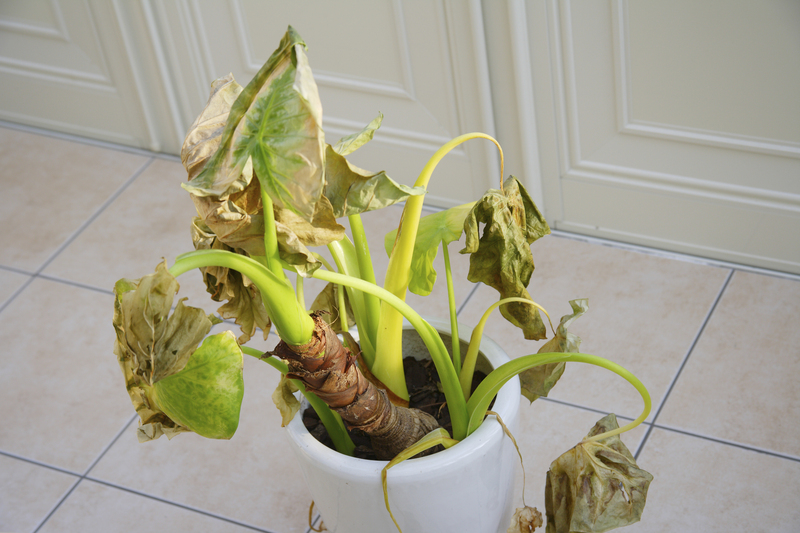Effective DIY Solutions for Getting Rid of Tree Stumps
Are you struggling with unsightly tree stumps in your garden or yard? While removing tree stumps can be daunting, the good news is that you don't always need professional help. Effective DIY methods for tree stump removal can save you money, restore your landscape, and prevent future pest or fungal issues. In this guide, we'll explore comprehensive, safe, and eco-friendly ways to get rid of tree stumps on your own.

Why You Should Remove Tree Stumps
- Improved Aesthetics: Stumps can be an eyesore, turning a beautiful lawn into a neglected landscape.
- Pest Prevention: Rotting stumps attract termites, ants, and beetles, which can migrate to healthy plants or your home.
- Safety: Exposed stumps are tripping hazards, posing risks for children, pets, and lawn equipment.
- Prevents Regrowth: Certain trees may regrow shoots from an existing stump, leading to an ongoing maintenance headache.
Key Considerations Before DIY Tree Stump Removal
Before jumping into action, assess the following factors:
- Stump Size: Smaller stumps are easier to remove manually; larger tree stumps may require more effort or advanced techniques.
- Tree Species: Hardwood tree stumps (like oak or maple) decompose slower than softwood stumps (like pine).
- Location: Consider proximity to buildings, utilities, and other landscaping elements.
- Budget and Time: Evaluate how much time and money you're willing to invest in the tree stump removal process.
Popular DIY Solutions for Tree Stump Removal
Let's break down several home-based approaches for tree stump removal, highlighting their pros, cons, and step-by-step instructions.
1. Manual Tree Stump Removal
Manual removal can be accomplished with a shovel, axe, and some elbow grease! This method works best for small- to medium-sized stumps.
Required Tools:- Shovel
- Axe or hatchet
- Pruning saw
- Mattock or digging bar (optional)
- Safety gloves and goggles
- Use a shovel to dig out soil around the stump, exposing the roots.
- Cut through roots with a pruning saw, axe, or mattock.
- Continue exposing and severing larger roots until the stump is free.
- Rock the stump back and forth, and pull it out when it's loose.
- Fill the hole with soil and tamp it down.
Tip: Soaking the ground with water the day before can make the digging and root-cutting easier.
2. Chemical Tree Stump Removal
Using biodegradable stump removal chemicals can accelerate natural decomposition, making the wood soft and crumbly. This is a low-effort solution, though it takes time (weeks to months).
Required Materials:- Stump removal granules or potassium nitrate
- Power drill
- Large drill bit (1-inch works well)
- Hot water
- Plastic tarp (optional, to boost decomposition)
- Safety gear (goggles, gloves)
- Drill several deep holes into the top and sides of the stump, 8-12 inches deep and spaced several inches apart.
- Pour the chemical granules into the holes according to package instructions.
- Add hot water to help dissolve the granules and enhance penetration.
- Cover with a tarp to keep the area moist and speed up decay.
- After a few weeks, the stump should be soft enough to break apart with an axe or shovel.
Note: Always follow manufacturer's safety guidelines and environmental recommendations when using chemical stump removers.
3. Burning the Tree Stump
Burning is a classic and effective method for getting rid of tree stumps rapidly, especially for old or dry ones.
Supplies needed:- Power drill
- Kerosene or fuel oil (not gasoline)
- Matches or lighter
- Metal bucket or fire ring (for safety)
- Shovel
- Drill several holes into the stump (as described in the chemical method).
- Pour kerosene or fuel oil into the holes, letting it soak in for a few days.
- Ensure local regulations allow open burning; check for burn bans or restrictions.
- Enclose the stump area with a fire ring or bricks for safety.
- Light the stump and monitor it while it slowly smolders away. (This may take several hours.)
- After burning, break up and remove any remaining wood and ashes.
- Fill the hole with soil.
Warning: *Never use gasoline! Always supervise the fire and keep a hose or extinguisher handy.*
4. Epsom Salt or Rock Salt Method
For an eco-friendly and inexpensive solution, consider using Epsom salt or rock salt to kill the tree stump and dry it out.
You'll need:- Epsom salt (magnesium sulfate) or rock salt (sodium chloride)
- Power drill
- Water
- Plastic tarp
- Drill holes as described in earlier methods.
- Fill each hole to the top with Epsom or rock salt.
- Add enough water to moisten the salt, but not dissolve it completely.
- Cover the stump with a tarp to keep rain off and moisture in.
- Reapply every few weeks; the salt inhibits regrowth and accelerates decay.
- Over months, the stump becomes brittle and can be hacked out.
Benefits: Slower than some other techniques, but safer for pets, soil, and the environment.
5. Natural Decomposition
If you're not in a rush, accelerating natural decay is a simple, chemical-free option.
How to speed up rot:- Drill holes in the stump to increase surface area.
- Keep the stump moist and covered with soil, compost, or mulch to introduce beneficial microbes and fungi.
- Optional: Add high-nitrogen fertilizer to nourish the bacteria and fungi that break down wood.
*This method takes the longest (six months to a few years), but is ideal for eco-conscious gardeners.*
Additional Tips for DIY Tree Stump Removal
- Protect Yourself: Always wear work gloves, eye protection, and sturdy footwear to avoid injuries.
- Remove Surface Roots: Don't forget to cut and extract surface roots, which can trip up lawnmowers or regrow shoots.
- Use Leverage: A pry bar or mattock is helpful for stubborn, deep-rooted stumps.
- Dispose of Waste Properly: Dead wood can be chipped, composted, or hauled away.
- Consider Your Landscaping Plan: Once the stump is gone, fill the hole and level the site for new lawn or planting.
Common Mistakes to Avoid When Removing Tree Stumps
- Ignoring Safety: Misusing chemicals or fire, or skipping protective equipment, can result in serious accidents.
- Overlooking Local Laws: Many regions have rules on open burning, chemical use, and stump disposal--check before starting!
- Rushing the Process: Some solutions (like salt or burning) take time. Be patient for best results.
- Using Harmful Chemicals: Avoid unapproved or highly toxic substances that can harm people, pets, or groundwater.
When Should You Call a Professional?
Some situations call for expert assistance rather than DIY solutions for tree stump removal. Consider hiring a professional if:
- The stump is very large (over 12" in diameter) or deeply embedded.
- There are utility lines, pipes, or structures nearby.
- You require fast results, such as for construction or landscaping projects.
- You don't have the time, health, or tools for manual labor.
Tip: Professional stump grinding is the fastest and most thorough method, though it can be more expensive than DIY approaches.

FAQs About DIY Tree Stump Removal
How long does each method take?- Manual removal: a few hours (small stumps); more for large or intricate roots.
- Chemical/salt: 4 weeks to several months until the stump is soft enough to remove.
- Burning: 3-12 hours for complete destruction, depending on stump size.
- Natural decay: 6 months to several years without intervention.
- Use chemicals & salt sparingly and keep them contained. Avoid overflow or spillage into adjacent planting beds.
- Yes--refill holes with topsoil. Amend the spot with compost to encourage new grass or plant growth.
Conclusion: Choosing the Right DIY Method
Effective DIY solutions for getting rid of tree stumps range from labor-intensive manual digging to gradual, eco-friendly techniques like salt or compost decay. Your choice depends on stump size, location, available tools, time frame, and personal preferences.
- For fast results: Try manual removal or burning (with care).
- For minimal effort: Chemical or salt methods provide a hands-off, gradual approach.
- For the greenest outcome: Promote natural rot with mulch, fertilizer, and moisture.
Getting rid of unwanted tree stumps yourself is possible, safe, and rewarding if you follow the right steps. By choosing an effective DIY tree stump removal method that fits your needs--and taking the proper precautions--you can restore your landscape, prevent problems, and save money at the same time.
Ready to transform your yard? Choose a method from our guide and safely reclaim your space--stump-free!



